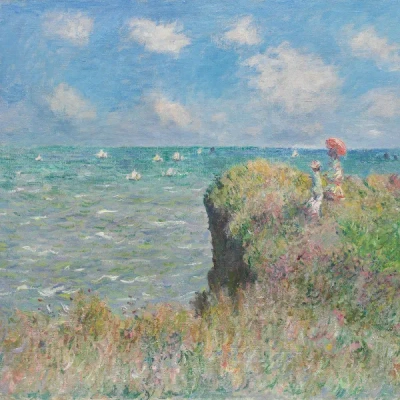The Art Of Restoration
The art of restoration is the subject of heated and long-running controversy.
Is it lowering the value of art? After restoration, who can an artwork be truly credited to? What are the potential dangers?
Conservators are in charge of restoration, which entails repairing damaged or ageing artworks. They are attempting to preserve our cultural history by modifying the artwork. However, there have been numerous restoration disasters, the most noteworthy of which are listed below, weakening the case that restoration is both beneficial and justified.
Fresco Fiasco
The 'Ecce Homo' artwork by Cecilia Giminez is one of the most well-known examples of restoration destroying art. Cecilia intended to restore the fresco to its original state and preserve the artist's legacy but instead, she created an entirely new piece that could only be ascribed to herself.
The original fresco was so dilapidated and ruined that it required the expertise and precision of a professional conservator, which Giminez sadly lacked. What started out as a noble effort to preserve a historical depiction of Christ turned into an accidental mocking of the famed fresco.
Nightmare of the Night Watch
Rembrandt's 'Night Watch' is another example of contentious conservation. The current name of the picture comes from the nature of the paint employed by the artist, which darkened over time. This painting exemplifies another concern with restoration: the difficulty of recreating the exact medium employed when the painting was created. The materials utilised by artists like Rembrandt are not easily identified or simply not replicable in their original state.
In order to comply with the wall space limits of the Town Hall in Amsterdam's display area, restorers cropped The Night Watch significantly, removing both space and figures from the composition. The fundamental problem with restoration is that it is extremely difficult (if not impossible) to undo the effects, therefore these discarded figures are irreplaceable...
In Opposition to Davinci's Style
The restoration of Leonardo da Vinci's alleged last painting, "The Virgin and Child with St. Anne," is a further example of debatable art restoration. During the discussion, the artwork was proudly displayed on the walls of the Louvre. The plan to clean the artwork was scrapped in 1993 due to fears that the solvent would harm the picture's "sfumato," a unique blending technique that is Da Vinci's signature. Around 2010-2012, it was agreed that minor restorations, primarily light cleaning of specific places, would be carried out because it was feared that more severe cleaning would result in irreversible damage. After some time had passed, the decision was made to thoroughly clean the artwork.
However, the Louvre was quickly accused of overcleaning the masterpiece, which caused the canvas to appear brighter than the Renaissance artist had intended, altering the overall sense of the work.
Regulations
Experts in Spain asked for controls on the restoration of artworks last year after a copy of Bartolomé Esteban Murillo's famed Immaculate Conception painting was deformed and the Virgin Mary's face was rendered unrecognisable, despite two attempts to restore the artwork to its original state.
Masterpiece Masterminds Or Creative Criminals?
The quandary of 'to repair or not to restore?' will always exist in the ever-expanding art world. However, when standing in front of a stunning Botticelli painting in the Victoria and Albert Museum, we should question ourselves if the danger is worth it. Conservators are frequently underappreciated, without them, we would be living in a world devoid of art history. Many artworks would be unrecognisable or non-existent if it weren't for the efforts of such professionals to keep them from deteriorating.
Despite the fact that such masterpieces are no longer in their original state and are no longer solely the product of their creator, they remain the most accurate portrayal of their initial presence in art history. One final prominent example that comes to mind is the Vatican's Sistine Chapel, which has been generally commended for its effective restoration in the twentieth century, despite its controversy.
Imagine if Leonardo Da Vinci, Michelangelo, and Botticelli didn't exist. Restoration does not always devalue art; on the contrary, it may help to preserve it for future generations.





